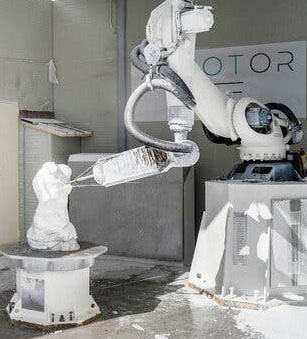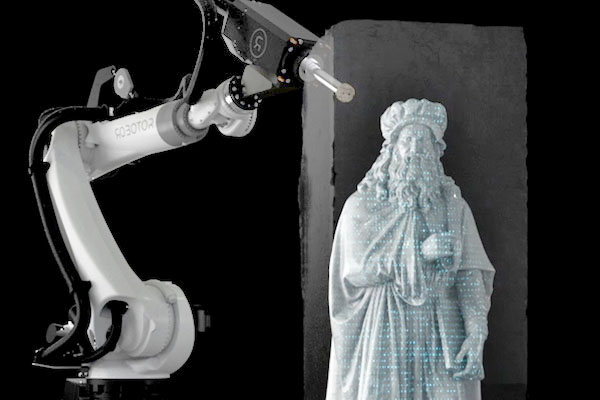The white marble of Carrara in Tuscany had already been quarried for centuries before Michelangelo walked the dusty, pebbled ground searching for the flawless block to sculpt his somber masterpiece, The Pietà. His glorious David came from the same area, cut decades before he laid a chisel to what became the world’s most famous gleaming marble statue. Five centuries after the Renaissance master chipped his way through mighty blocks of marble, they are now being carved not by sensitive human hands, but by cold dispassionate computer code.
Near the Italian Apennine mountaintop where artists such as Canova and Bernini had workshops to cut and drill the near-translucent rock, today several robots hum away as their diamond-pointed extendible arms remove stone with a precision and speed unimagined by artisans of the past. A host of robots stand ready, should statues of Jupiter or Diana be required by wealthy patrons or customers, as they are now more aptly described.
There are artisans of today that are not secretive about using robots and have neither the skill, patience nor time that the 15th century sculptors had to spend on one piece. Some now contract out the work to Robotor, a company that can create an intricate work in mere weeks. In contrast, 16th century sculptor Antonio Canova took five years to bring his romantic sculpture Psyche Revived by Cupid’s Kiss out of the nearly impenetrable rock, while today, Giacomo Massari, co-founder of Robotor, claimed that with robots, the work was completed in 270 hours.

While many countries attempt to revive ancient artisanal skills, Robotor’s founders offer their technology to 21st century artists. A sculptor can send Robotor several drawings, which, along with 3-D details of a block of Carrara marble, will be scanned. The information is then transmitted to a robot, whose 12 foot long arm will whirr into action to bring form to the stone.
Technician Michele Basaldella is the brain behind the technology. He says there is no reason not to have the artworks created by a robot. In his view, it is no different than a workshop during the Renaissance, when the assistants did much of the heavy lifting. In fact, Basaldella claims 90 per cent of a Renaissance sculptor’s work was done by apprentices.
But there is as always the argument, is it truly art? Carrara sculptor Michele Monfroni, 49, said that “if Michelangelo saw the robots, he would tear out his hair. Robots are business, sculpture is passion.”
He believes sculpting a statue out of a marble block with one’s hands is the only true sculpture and what is happening in the mountains these days might just be a threat to Italy’s artistic legacy. “Sculpture is something you have inside,” he said. “If you use a robot, you also become a machine yourself.”





